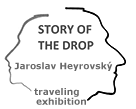Merging photochemistry and electrochemistry in flavin-based redox catalysis
Merging photoredox catalysis and electrochemistry could significantly push boundaries of catalytic redox transformations. Nevertheless, “electrochemically mediated photoredox catalysis” is still in its infancy and novel systems, especially those with organic molecules tailored for this type of catalysis are desirable. Flavin derivatives with their unique ability to switch between several redox forms, which, upon excitation, can act either as extremely strong oxidizing or reducing agents, represent an ideal group of compounds for this purpose. Within the project, novel flavin-based catalytic electrophotochemical systems will be designed based on structure vs electrochemical and photophysical properties relationship investigation. Oxidations of non-activated aromatic compounds and alkanes to allow direct C-H functionalization, reduction of electron-rich chlorobenzenes, useful in C-C and C-heteroatom coupling reactions, reductive removing or protecting groups and reductions of amides, nitriles and electron rich benzenes are examples of applications studied within the project.
prof. RNDr. Ludvík Jiří CSc.
 jh-inst.cas.cz
jh-inst.cas.cz
















